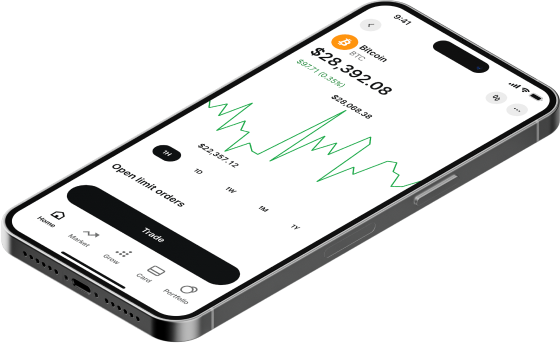Page d'accueil du blog
COMPANY
JUL 03, 2023
Gemini Foundation Academy: Understanding Margin and Leverage

Undoubtedly, you’ve heard the terms “trading on margin” or “100x leverage,” but what do they mean exactly and how do they relate to each other?
In this blog, we discuss these terms and how they apply to perpetual derivatives (perps) trading. As we continue to expand our perps offerings through Gemini Foundation, we aim to provide you with the knowledge and tools to trade with confidence.
What is Leverage?
Leverage allows you to take larger positions with less committed capital. For example, with 10x leverage, you can buy $1,000 of an asset with $100 of collateral, effectively increasing your buying power by a factor of 10.
This collateral is your margin balance. You must have sufficient funds in your margin account to place a perps order and to maintain the position going forward. If the market moves against you, you may need more collateral in your margin account to cover your losses, otherwise you risk your position being closed, or liquidated, by the exchange.
As the market moves, your margin balance changes based on unrealized gains and losses, the adjusted balance is represented by a metric known as Margin Asset Value. The formula for Margin Asset Value is:
Margin Asset Value = Margin Balance + Unrealized Gains - Unrealized Losses
Initial vs. Maintenance Margin
There are two different margin requirements that you need to be aware of when trading perps: Initial Margin and Maintenance Margin.
Initial margin is the balance you are required to hold in your margin account in order to place a perps order. The first order placed for a perps instrument is called “opening a position, where your position is the total number of perps contracts you are long (buy) or short (sell).
If you buy 10 BTCUSD PERPs contracts, you are now long 10 BTCUSD PERPs. If you subsequently sell 15 contracts, you have effectively closed your long position and opened a 5 BTCUSD PERPs short position.
Maintenance margin is the minimum Margin Asset Value required to keep your position open. It is typically half of the initial margin requirement. The maintenance margin changes slightly as the price of the perps instrument changes, but more importantly, your margin asset value shifts as a result of your gains and losses.
If you are long and the price goes down, you may need to add more funds to your margin account to maintain your position. If you do not maintain sufficient funds in your margin account, your position could be partially or completely liquidated.
Isolated vs. Cross Margin
When trading on margin, it is also important to understand the distinction between isolated and cross margin.
With isolated margin, each open position has a separate margin balance and requirement. This means that your BTCUSD perp position is not affected by what happens with your ETHUSD perp position, and vice versa. If the margin balance falls below the maintenance margin for a given position, only that position faces liquidation.
Cross margin is the more prevalent margin system used in the crypto derivatives market. With cross margin, all open positions pull from the same pooled margin account. This makes it easier to maintain as you only have a single margin account to manage and a gain on one position is automatically allocated to offset any losses on your other positions. The downside is that if your margin asset value falls below your maintenance margin, all of your positions are at risk of liquidation.
Now that we’ve covered the basics of leverage and margin, let’s walk through some examples to see how these concepts work in practice.
Example 1 — One Position
Let’s say you want to open a 10 BTCUSD PERP position on an exchange offering max leverage of 100x. The current price is $30,000 and your margin account balance is $10,000 USD (or equivalent in stablecoins). Although each exchange may have slightly different ways of calculating required margins, the basic equation is:
Notional Position Value = Leverage x Margin Asset Value
Plugging in the example above, we get:
(10 x 30,000) = Leverage x 10,000
Solving for Leverage:
Leverage = 30x
In this example, you end up with 10 BTCUSD PERP contracts at 30x leverage.
Example 2 - Market Movement
Building on our example above, let’s further assume that the price of BTCUSD has increased by 2% to $30,600. Your position now has $6,000 [(30,600 - 30,000) x 10] in unrealized gains. This increases your Margin Asset Value to $16,000. Using the same equation:
Notional Position Value = Leverage x Margin Asset Value
And plugging in the new figures:
(10 x 30,600) = Leverage x 16,000
We can compute a new leverage:
Leverage = 19.125x
You still hold 10 BTCUSD PERP contracts, but your leverage has decreased to 19.125x.
Example 3 - Two Positions
Let’s say you now want to open a short 100 ETHUSD PERP position. The current price for ETHUSD is $2000. Since you are using cross margin, you will be using the same margin balance to cover both positions. Let’s see the impact on your leverage after you open the new short position:
Notional Position Value(Total) = Leverage x Margin Asset Value
Adding the notional value for both positions, we get:
(10 x 30,600) + (100 x 2000) = Leverage x 16,000
Solving for leverage:
Leverage = 506,000 / 16,000 = 31.625x
Adding the new position has increased your leverage from 19.125x to 31.625x.
You can also adjust your leverage by adding or removing funds from your margin account. This won’t affect the total profit or loss on your positions, but allocating some additional capital could prevent them from being liquidated if the market moves significantly against you. Just because you can use up to 100x leverage doesn’t mean you have to or should.
Leverage can allow you to take larger positions with lower capital requirements, however it’s always a good idea to keep an eye on your margin position to prevent an unexpected liquidation.
This series is more than just a learning resource — it's an invitation to join Gemini’s thriving community of traders and crypto enthusiasts. We encourage active participation, open dialogue, and knowledge exchange to further enhance your learning experience.
We have plenty more resources planned just for you so stay tuned to our blog!
Onward and Upward, The Gemini Foundation Team
Disclaimer
Cryptocurrency derivatives are complex products that are not suitable for all investors. You should participate in trading crypto derivatives at your own risk and only after doing your own research and understanding the function, terms, and conditions of these products. With leveraged derivatives, you may lose part or all of your investment even if there is only a small fluctuation to the index price.
ARTICLES CONNEXES

COMPANY
MAR 18, 2025
Gemini ActiveTrader Is Now More Customizable

WEEKLY MARKET UPDATE
MAR 13, 2025
Recession Fears Weigh Down Crypto Market, Mt. Gox Moves ~$1B, and El Salvador Builds Up Bitcoin Reserve

COMPANY
MAR 12, 2025
